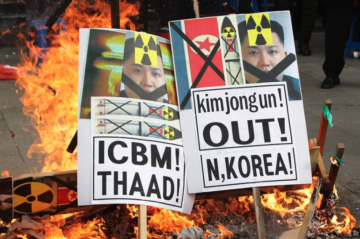 Tim Sahay and Kate Mackenzie in Polycrisis:
Tim Sahay and Kate Mackenzie in Polycrisis:
Watch the Korean Peninsula. It is in South Korea that the New Cold War has most visibly upset the delicate balance between industry, security, and domestic politics.
South Korea’s growth miracle has been based on deterrence and detente between China, its main trading partner; the United States, its ally and security guarantor; and North Korea, its neighbor with newly developed intercontinental ballistic missiles. The country has been on hair-trigger alert since last October, when North Korea stepped up its barrage of ballistic missile tests, including launching one over Japan. In a show of strength, South Korea launched its own ballistic missile, but the weapon malfunctioned, crashing in the coastal city of Gangneung, where the resulting fire raised panic of a North Korean attack.
Now that North Korea has demonstrated the ability to strike the US homeland, South Koreans worry that Washington might abandon them in a conflict to protect US cities instead. Today, 71 percent favor developing their own nuclear weapons. “New York for Berlin” was the central extended deterrence dilemma of the old cold war. The new question is: Would the Americans really trade “Seattle for Seoul?”
Last week, while the national security advisor Jake Sullivan was unrolling the “new Washington consensus” (the subject of our next dispatch), Presidents Biden and Yoon were holding security and trade negotiations in DC that resulted in a Washington Declaration. “Our mutual defense treaty is ironclad, and that includes our commitment to extended deterrence,” Biden said, referring to the treaty signed to end the Korean War seventy years ago. For his part, Yoon referred to the “unprecedented expansion and strengthening” of the US nuclear umbrella. The upshot was that South Korea agreed not to pursue its own nuclear weapons program in return for a greater decision-making role in US military planning should North Korea launch a nuclear attack.
More here.
